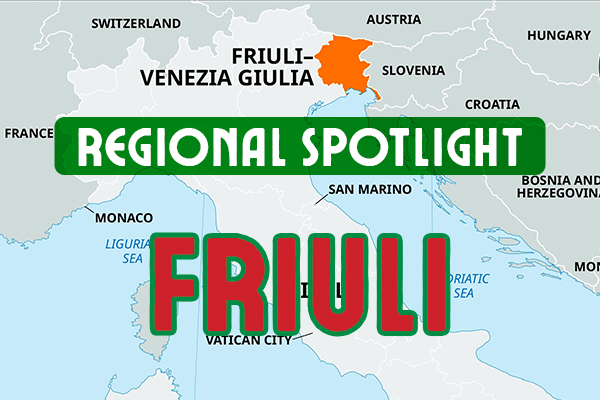Discover the hidden gems of Friuli Venezia Giulia, where alpine landscapes, historic cities, and rich culinary traditions come together. From the vibrant streets of Trieste to the serene beauty of the Dolomites, explore this unique Italian region.
Friuli Venezia Giulia, located in the northeastern corner of Italy, is a region that offers a unique blend of alpine landscapes, Adriatic coastlines, historic cities, and rich cultural traditions. Often overlooked by tourists in favor of more famous Italian destinations, Friuli Venezia Giulia is a hidden gem waiting to be discovered. Let’s explore the various aspects that make this region a must-visit destination.
Location and Climate
Friuli Venezia Giulia is bordered by Austria to the north, Slovenia to the east, the Adriatic Sea to the south, and the Veneto region to the west. Moreover, The region’s diverse geography includes the rugged Dolomite Mountains, rolling hills, fertile plains, and a stunning coastline along the Gulf of Trieste.
The climate in Friuli Venezia Giulia varies depending on the area. Moreover, The coastal regions experience a Mediterranean climate with hot, dry summers and mild, wet winters. The inland areas have a more temperate climate with warm summers and cool winters, while the mountainous regions enjoy a colder alpine climate, perfect for winter sports.
Historical Tapestry
Friuli Venezia Giulia’s history is as varied as its landscape, influenced by multiple cultures and civilizations. Key historical periods include:
Roman Era: Additionally, The region was an important part of the Roman Empire, with the ancient city of Aquileia serving as a major trading and military hub. Many Roman ruins, such as the forum and basilica in Aquileia, can still be seen today.
Medieval Period: During the Middle Ages, Friuli Venezia Giulia was a patchwork of feudal territories and city-states. Moreover, The region saw the construction of numerous castles, fortresses, and walled towns.
Habsburg Rule: In the early modern period, the region came under Habsburg rule, particularly the city of Trieste, which became a key port of the Austro-Hungarian Empire. Furthermore, This influence is still visible in the region’s architecture and cultural institutions.
Modern Era: Friuli Venezia Giulia became part of Italy after World War I. The region has since developed a strong cultural identity, blending Italian, Austrian, and Slovenian influences.
Key Cities
Trieste: Additionally, The capital of Friuli Venezia Giulia, Trieste is a cosmopolitan city with a rich history and vibrant cultural scene. Key attractions include the Piazza Unità d’Italia, the largest sea-facing square in Europe, the Castello di Miramare, and the Roman Theater. Moreover, Trieste’s coffeehouses and literary heritage, associated with writers like James Joyce, add to its charm.
Udine: Known for its Venetian architecture and vibrant piazzas, Udine is a city that blends historical charm with modern amenities. Highlights include the Udine Castle, the Piazza Libertà, and the stunning frescoes by Tiepolo in the Oratorio della Purità.
Gorizia: A city with a unique blend of Italian, Slovenian, and Austrian influences, Gorizia offers a rich cultural experience. Moreover, The Gorizia Castle, the Transalpina Square (divided by the Italian-Slovenian border), and the beautiful gardens of the Coronini Cronberg Palace are must-sees.
Pordenone: This lively city is known for its medieval architecture and cultural events, such as the annual Pordenone Silent Film Festival. Key attractions include the Cathedral of St. Mark and the Palazzo Ricchieri.
Aquileia: Once a major Roman city, Aquileia is now a UNESCO World Heritage site. The city’s archaeological area, including the Roman forum, basilica, and ancient harbor, provides a fascinating glimpse into its past.
Culinary Delights
Friuli Venezia Giulia’s cuisine is a reflection of its diverse cultural influences and rich agricultural heritage. The local dishes are hearty and flavorful, often featuring fresh, locally sourced ingredients. Key culinary highlights include:
Frico: A traditional dish made from fried cheese, potatoes, and onions, often served as an appetizer or side dish.
Jota: A hearty soup made with beans, sauerkraut, potatoes, and pork, reflecting the region’s Central European influence.
Gnocchi di Susine: Sweet plum-stuffed gnocchi, typically enjoyed as a dessert or a sweet main course.
San Daniele Prosciutto: A renowned dry-cured ham from the town of San Daniele del Friuli, known for its delicate flavor and melt-in-your-mouth texture.
Strucolo: A rolled pastry filled with various ingredients, similar to strudel, highlighting the region’s Austrian influence.
Click here to browse Recipes from the Friuli Venezia Giulia Region
Agricultural Highlights
Agriculture plays a vital role in Friuli Venezia Giulia’s economy, with the region producing a wide range of high-quality products. Key agricultural highlights include:
Wine: Friuli Venezia Giulia is one of Italy’s top wine-producing regions, known for its excellent white wines, particularly those made from Friulano, Sauvignon Blanc, and Pinot Grigio grapes. The Collio and Colli Orientali del Friuli wine regions are particularly renowned.
Olive Oil: Furthermore, The region produces high-quality extra virgin olive oil, characterized by its fruity and slightly spicy flavor.
Cheese: Friuli Venezia Giulia is known for its artisanal cheeses, including Montasio, a semi-hard cheese with a delicate, nutty flavor.
Grains and Legumes: The fertile plains of the region are ideal for growing grains, corn, and legumes, which are integral to the local cuisine.
Tourism and Major Attractions
Tourism in Friuli Venezia Giulia is diverse, with visitors drawn to its historical sites, natural beauty, and cultural events. Major attractions and activities include:
Miramare Castle: Located on the Gulf of Trieste, this 19th-century castle offers stunning views, beautiful gardens, and a glimpse into the opulent lifestyle of its former residents, including Archduke Ferdinand Maximilian of Austria.
Dolomites: The northeastern part of the region is home to the stunning Dolomite Mountains, a UNESCO World Heritage site. Moreover, The area offers excellent opportunities for hiking, skiing, and mountaineering.
Aquileia: Explore the extensive Roman ruins of Aquileia, including the basilica with its magnificent mosaics, the ancient forum, and the archaeological museum.
Grado: Known as the “Sunny Island,” Grado boasts beautiful beaches, a charming old town, and therapeutic thermal baths. It’s a perfect destination for relaxation and wellness.
Palmanova: This unique star-shaped fortress town, built in the late 16th century, is a UNESCO World Heritage site. Its well-preserved fortifications and geometric layout make it a fascinating place to visit.
Things to See and Do
Whether you’re interested in history, nature, or gastronomy, Friuli Venezia Giulia offers a wide range of activities to suit all interests. Here are some top recommendations:
Explore Trieste: Wander through the streets of Trieste, visit its historic coffeehouses, and explore cultural landmarks such as the Castello di San Giusto and the Revoltella Museum.
Wine Tasting: Tour the vineyards and wineries of the Collio and Colli Orientali del Friuli regions to sample some of Italy’s finest wines.
Hiking and Skiing in the Dolomites: Enjoy outdoor activities in the Dolomite Mountains, from hiking and mountain biking in summer to skiing and snowboarding in winter.
Relax on the Beaches of Grado: Spend a day lounging on the sandy beaches of Grado, exploring its charming old town, and enjoying the local seafood.
Visit Historical Sites: Discover the rich history of the region by visiting sites such as the Roman ruins of Aquileia, the medieval castles of Gorizia and Udine, and the unique fortress town of Palmanova.
Conclusion
Friuli Venezia Giulia, with its diverse landscapes, rich history, and vibrant culture, is a region that offers something for everyone. Whether you’re exploring the cosmopolitan city of Trieste, savoring local wines, or enjoying outdoor adventures in the Dolomites, Friuli Venezia Giulia provides an unforgettable experience. This northeastern gem of Italy is a must-visit destination for anyone seeking to discover the diverse and enchanting charms of the country.

